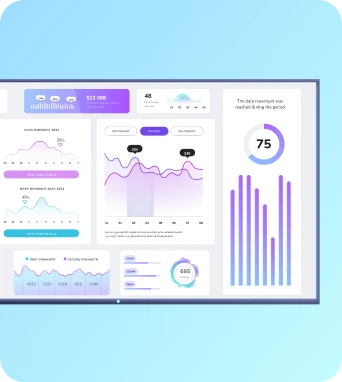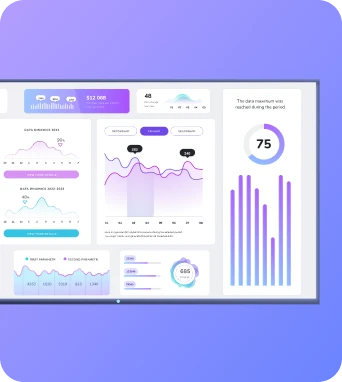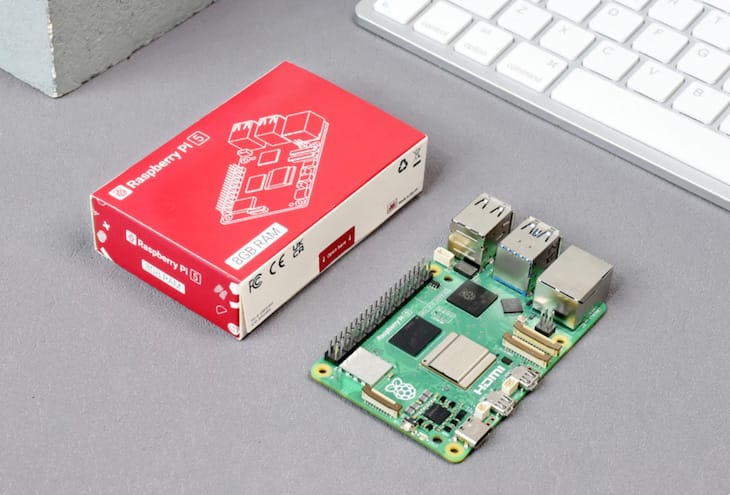Pull out the tea plates and break out the whipped cream, because the Raspberry Pi 5 is here.
And Fugo is one of the first digital signage apps to have full support on the Raspberry Pi 5.
We’re taking a deep dive into (literally) all the details about this super exciting announcement, including a breakdown of the Raspberry Pi 5, how it works with digital signage, and how you can integrate with Fugo to make the magic happen.
Let’s dive in.
So what’s Raspberry Pi 5?
Raspberry Pi devices are basically mini-computers that lots of hardware tinkerers (and sometimes pros!) use for various IT projects. They’re also one of the devices Fugo is supported on – but we’ll get into the specifics of that later on.
The Raspberry Pi 5 is the latest generation of Pi devices that was released on October 23, 2023. It’s bigger, better, and a lot more powerful than all of its earlier predecessors.
Want proof?
Just take a look at how the Raspberry Pi 4 compares to the Raspberry Pi 5:
Keep reading for a more comprehensive breakdown of what this means and why it matters.
What makes the Raspberry Pi 5 so special?
Glad you asked!
Here’s a quick crash course on what makes the Raspberry Pi 5 unique:
- New CPU (runs at a higher clock speed)
- New GPU (for video playback)
- Newer generation of RAM
- Updated SD card slot
- Upgraded Wi-Fi module (runs the same, but is twice as fast)
Feeling a little lost? Not to worry! We explore these benefits in detail later on.
For now, you just have to know that this single-board computer offers everything you need to get applications up and running – including digital signage software.
Raspberry Pi 5 features
- With the new GPU, you can drive two 4K displays at 60 frames per second
- You can use HDR support to set up easy connections to screens
- There’s a dual-band WiFi controller so you can easily switch between 2.4 and 5 GHz channels easily
Raspberry Pi 5 limitations
- Best performance requires active cooling, so you might want to save up for a fan
- Don’t expect the most amazing multi-zone layout performance
- Some apps won’t display as smoothly, including some of our digital signage integrations
So what’s new with the board?
The Raspberry Pi 5 shares a similar form factor with the Raspberry Pi 4. However, there are a few notable differences to keep in mind, especially when it comes to its existing layouts.
You can expect to see a few new components on the board:
- Cortex-A76 CPU (@ 2.4 GHz)
- Video Core 7 GPU (@ 1 GHz)
- RP1 chip (puts external interfaces onto your PCIe)
You’ll also notice a few physical differences.
For one thing, the Raspberry Pi 5 has its USB and Ethernet ports in reverse order. It looks a bit like a 3B+ depending on the angle.
The camera and display ports have also changed. For example, you won’t see a jack audio port on the Raspberry Pi 5 (but you can still tap into HDMI and Bluetooth).
The good news is, we finally have an on/off button! You can switch on (and off) your Raspberry Pi 5 with ease.
The Raspberry Pi 5 and digital signage

You can use the Raspberry Pi 5 for a lot of different use cases, but one of the biggest (and most exciting) is easily digital signage. The price (which is great!) is only part of the equation. There’s so much more you can do with this new piece of hardware.
For one thing, the Raspberry Pi 5 starts at under $100 USD. For such a powerful little computer, that’s pretty good value.
Plus, lots of digital signage apps run smoothly on these devices. Even intensive dashboard apps like Power BI have performed well in our testing.
But the Raspberry Pi 5 isn’t just an easy-to-install, low-cost player – it’s ideal for displaying digital images, videos, and menus.
Let’s take a closer look at the performance below so we can prove just how valuable this new hardware can be.
How digital signage content performance will improve with the Raspberry Pi 5
The Raspberry Pi 4 is a good piece of hardware, but when it comes to digital signage, it pales in comparison to the RPi 5. Benchmarks consistently show performance improvements of >2x, which means it can handle larger and longer content more easily.
In addition to being twice as fast as the Raspberry Pi 4, the Raspberry Pi 5 comes with loads of performance improvements.
For example:
- The new CPU and architecture runs at a higher clock speed (2.4GHz versus 1.5GHz). Recent benchmarks show it’s nearly twice as slow as the Apple M1 (which means it's actually really fast).
- The new GPU (12-core VideoCore VII) makes video playback a cinch. It’s about 2.5x faster than the GPU of the Raspberry Pi 4. And since you can connect to external graphics cards now, it’s never been easier to get the graphical output you want.
- The newer generation of RAM provides a much faster, smoother experience. To summarize: Raspberry Pi 5 uses LPDDR4X, which runs at 4266 Mb/s/pin. Latency is also cut by more than half.
- The updated SD card slot runs much faster. Benchmarks show 90 Mbps on the Pi 5 vs 46 Mbps on the Pi 4.
- The WiFi module is the same as the Raspberry Pi 4. That said, it now runs twice as fast.
To top it all off, the Raspberry Pi 5 is now 50% more power efficient than the Raspberry Pi 4.
It’s literally the perfect recipe for better digital signage management on a budget, no matter your industry or content use cases.
How Fugo supports the Raspberry Pi 5
Fugo loves our Raspberry Pi customers! We’re proud to have supported (and still support!) users of the Raspberry Pi 4.
But in order for us to support the RPi 5, we had to do some refactoring of our existing RPi software. As a result, Fugo is even simpler to install on the devices than it used to be. Connecting your RPi to your internet connection is now easier than ever.
Here’s how Fugo makes it possible to marry digital signage to a Raspberry Pi:
- We offer Raspberry Pi CM4 and Raspberry Pi 5 support. We also support (but don’t recommend) Raspberry Pi 3 Model A+, B+, and B.
- We now offer offline playback! Keep the signage rolling wherever you are – whether or not you have a WiFi connection.
- We’ve updated our Chromium version to 125. This will help us serve you better and keep the updates rolling.
- Our WiFi pairing process now has an easy-to-use interface. You can also change and remove networks now, where previously you couldn’t.
- We support all sorts of file types! This includes images (JPEG, JPEG 2000, PNG, WebP, SVG, GIF), videos (MP4, MPG, MPEG, MOV, AVI), audio (MP3), and documents (PDF).
Fugo supports all the features you need to run digital signage from your Raspberry Pi 5. Frankly, the possibilities are great (provided you have a good imagination).
Just think of all the features you’ll benefit from:
- Apps from our App Store
- Landscape and portrait mode media
- Offline media playback
- Webpage support
- Remote Fugo application updates
- Remote screenshot monitoring (aka TV dashboards)
And more!
What will I need to use the Raspberry Pi 5 with Fugo?
Good question! And good news: it’s nothing expensive.
You probably have a lot of these tools lying around right now.
Here’s what you need to use the Raspberry Pi 5 with Fugo:
- USB C cable: For power
- Micro HDMI cable: For video out
- SD Card: To carry flash files (more on this later)
Optional, but recommended tools include:
- Keyboard and mouse: To pair your WiFi connection. Hopefully you’ll only need your keyboard in the future, but we’re still working on making that feature a reality. If you’re planning to use Ethernet, you’ll need an ethernet cable instead.
- Case and fan: Keep your Pi safe and protected.
- RPi 5 Starter Kit: This includes everything you need to get started with digital signage, including a USB C, Micro HDMI, SD Card, case, and fan (this costs an extra $150-ish depending on the reseller you choose).
How to use the Raspberry Pi 5 for digital signage
So you’re sold on using the Raspberry Pi 5. But how do you get up and running fast?
With Fugo, it’s never been easier to ramp up.
Here’s how to install a digital signage tool like Fugo on your Raspberry Pi 5:
- Download the file containing the image from this GitHub link
- Unzip the file with a .img extension
- Flash the .img file onto your SD card (we prefer balenaEtcher)
- Set up your WiFi or plug in your Ethernet cable
- Insert the SD card into your Raspberry Pi 5
- If you’re successful, you’ll see the Fugo pairing page pop up
Then all you have to do is pair your screen to the Fugo CMS.
You’re ready to rock and roll!
Get started with Fugo and Raspberry Pi 5
The Raspberry Pi 5 sets an exciting milestone in the world of digital signage. With a TV screen and a $100 bill, you can set up professional digital signage that wows your audience, whether they’re frontline workers or an internal sales team.
If you’re an existing Fugo customer, here’s a guide to setting up our digital signage CMS with your Raspberry Pi 5.
Just want to try before you buy? Start tinkering for free by signing up for a 14-day trial.





